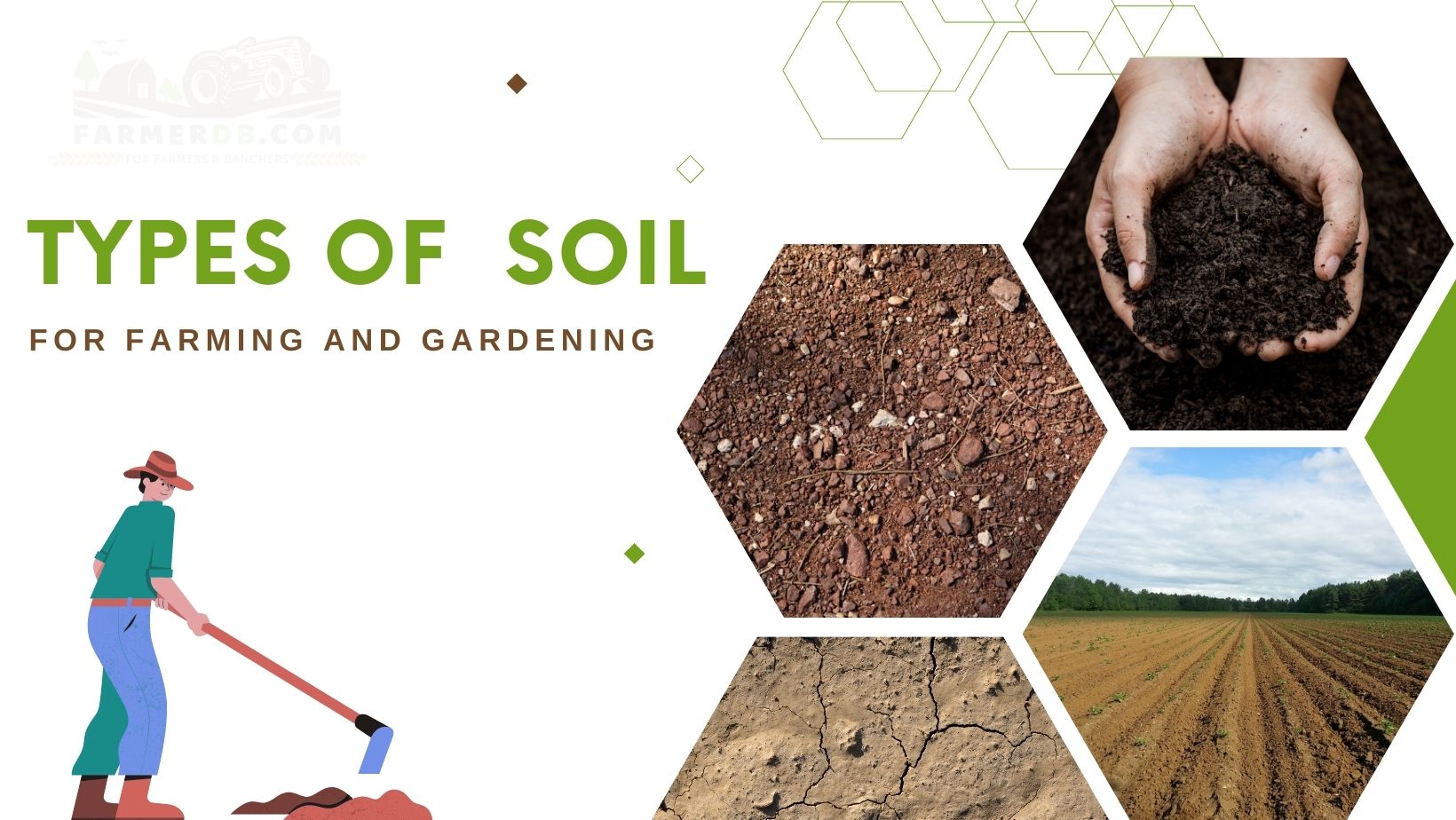
Farming and gardening are deeply dependent on the type of soil in which crops or plants grow.
Understanding the various types of soil is a crucial piece of information that cannot be overlooked if you want to cultivate healthy and thriving plants. Without considering this factor can lead to poor results and even potential failures of an entire crop.
The right type of soil serves as a vital foundation, ensuring that plants receive essential nutrients, water, and proper filtration, all of which are essential for their growth and development.
Today I present to you the types of soil, their classifications, and how you can perform a DIY test to determine the soil type in your farm or garden.
Contents
- Types Of Soil By Texture
- Types of Soil by Composition
- Types of Soil by Color
- Types of Soil by Moisture Regime
- Types of Soil by Organic Matter
- Types of Soils by pH Ranges
- Types of Soils Based on Drainage Characteristics
- Types of Soil by Parent Material
- Types of Soil by Density
- Type of Soil by Structure
- Types of Soils based on USDA Soil Taxonomy
- How to Identify Your Type of Soil
Types Of Soil By Texture
The soil classification by texture divides soil into three primary groups based on the size of the soil particles. This is one of the simplest and most commonly utilized soil classifications in farming and gardening.
- Sandy soil / Sand – large particles
- Silty soil / Silt – medium particles
- Clay soil / Clay – small particles
Types of Soil by Composition
The second most utilized soil classification is based on composition. This classification results in six types of soil that are well-known and commonly used in agriculture. These six types of soil are beneficial for preparing to plant various crops, selecting appropriate cultivation practices, and determining the required level of irrigation.
- Clay soil
- Sandy soil
- Silty soil
- Peaty soil
- Chalky soil
- Loamy soil
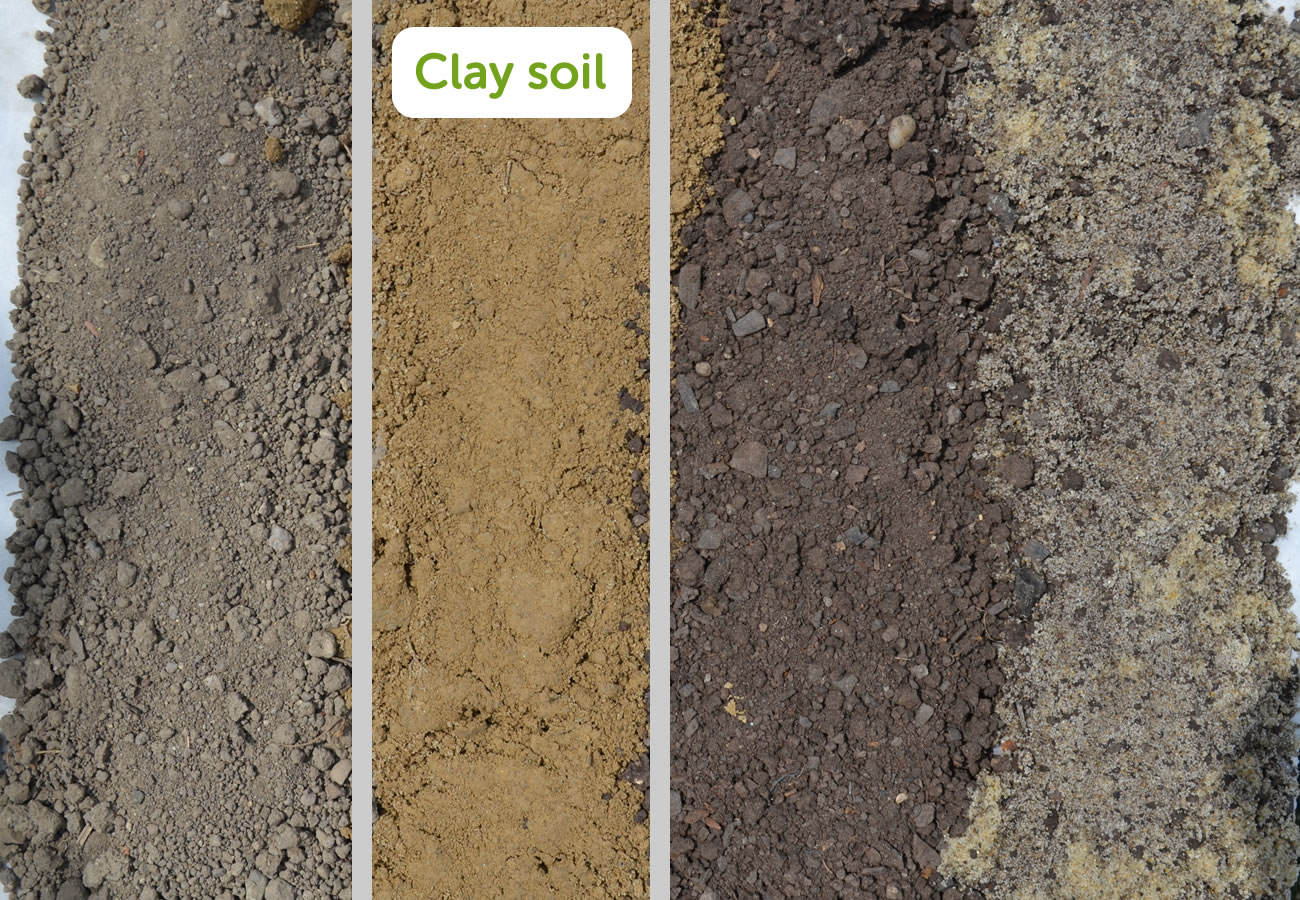
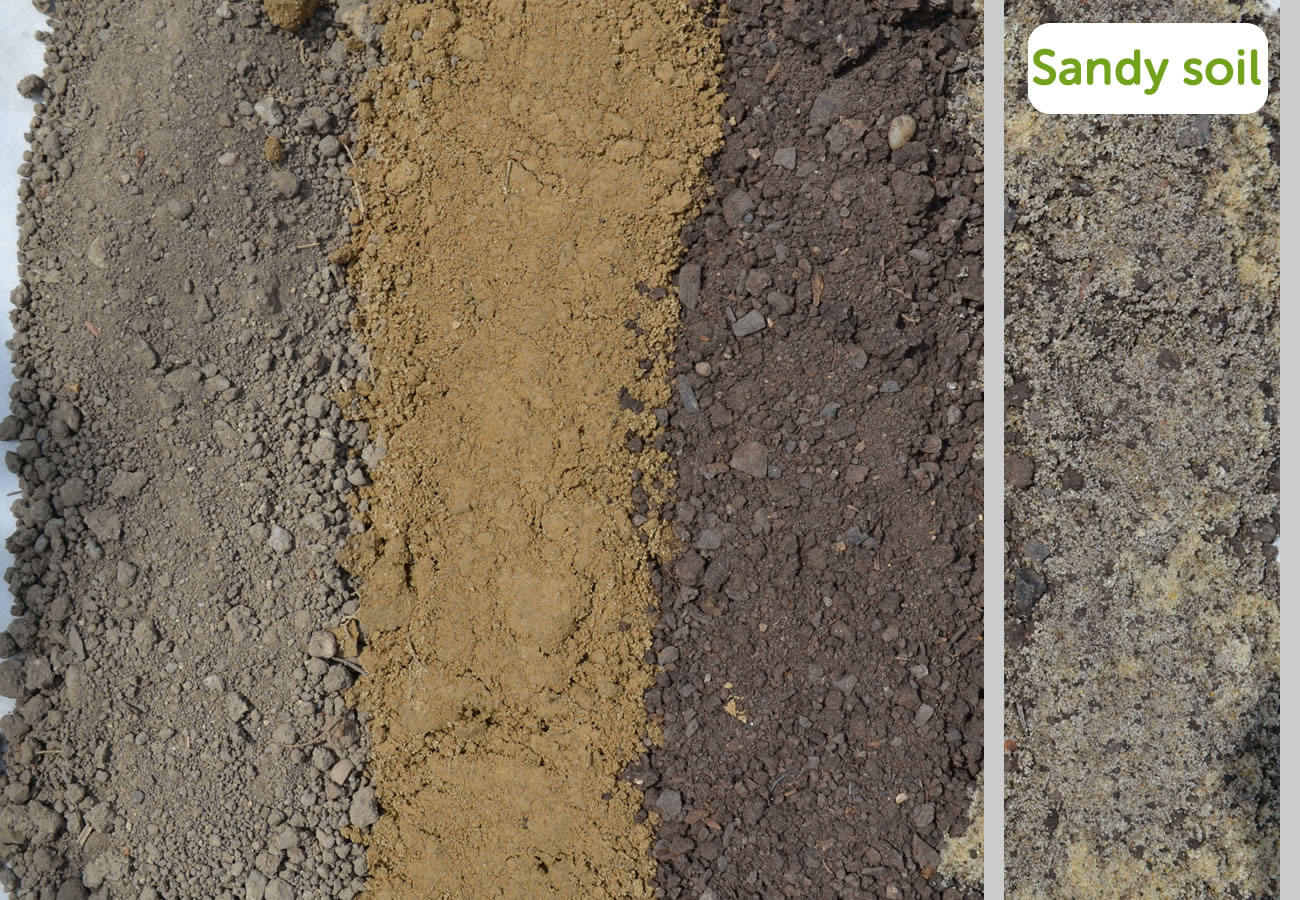

Apart from these six types, there are additional soil texture classes that indicate soils with a predominant texture but containing significant amounts of another particle size.
These are:
- Sandy clay
- Silty clay
- Clay loam
- Silty clay loam
- Sandy clay loam
- Sandy loam
- Silt loam
- Loamy sand
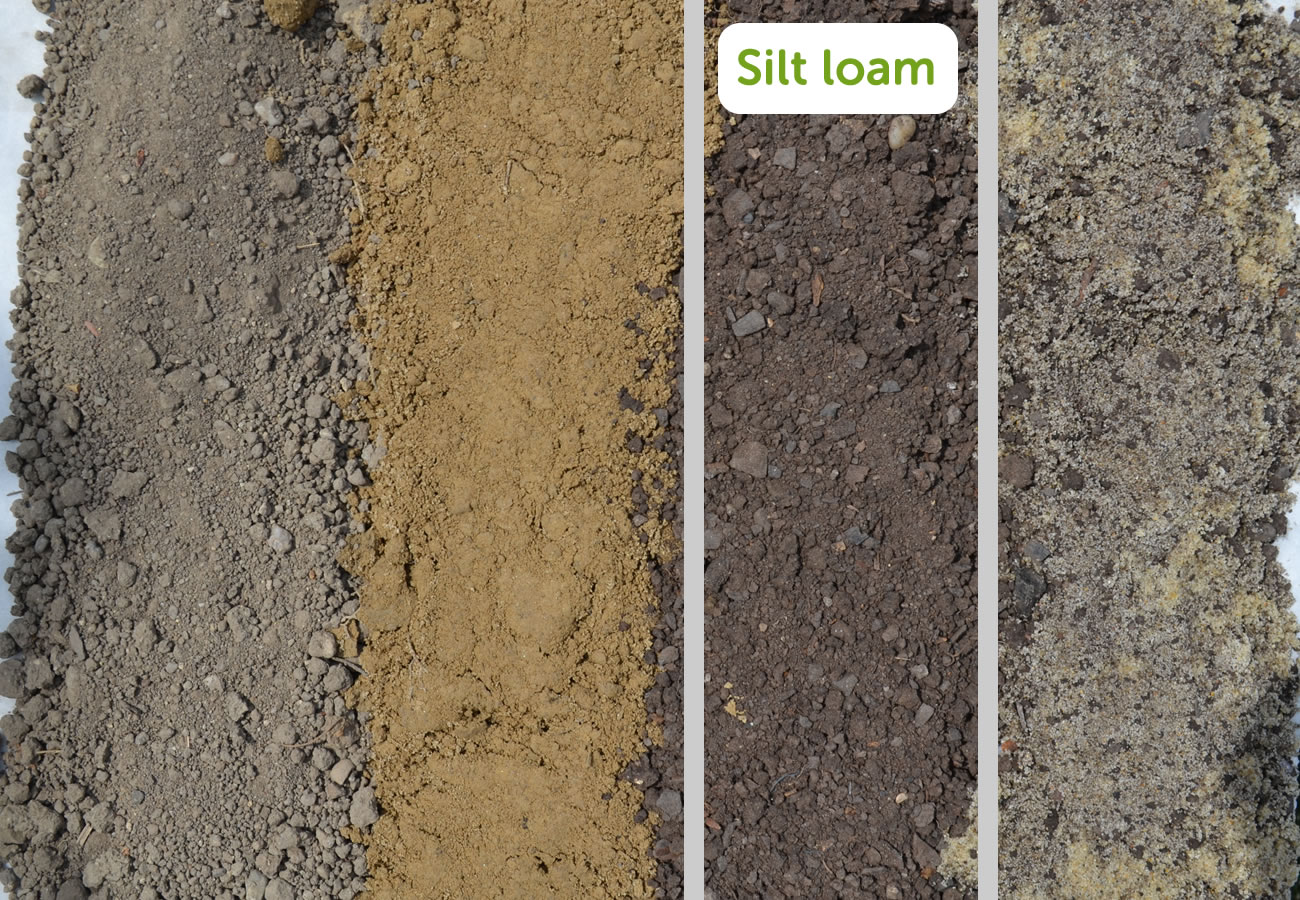
Types of Soil by Color
Soil can also be classified based on its color. The colors of soils vary from black to other colors such as red, yellow, and even white. This type of soil classification can be useful in several situations, especially when identifying soil, as color can be one of the first visual indicators.
Soil color can provide valuable insights into soil properties such as drainage, organic matter content, moisture, and fertility. This information is particularly helpful for farmers and gardeners who need to make decisions regarding soil management practices.
- Red soil
- Brown soil
- Black soil
- Gray soil
- Yellow soil
- White soil
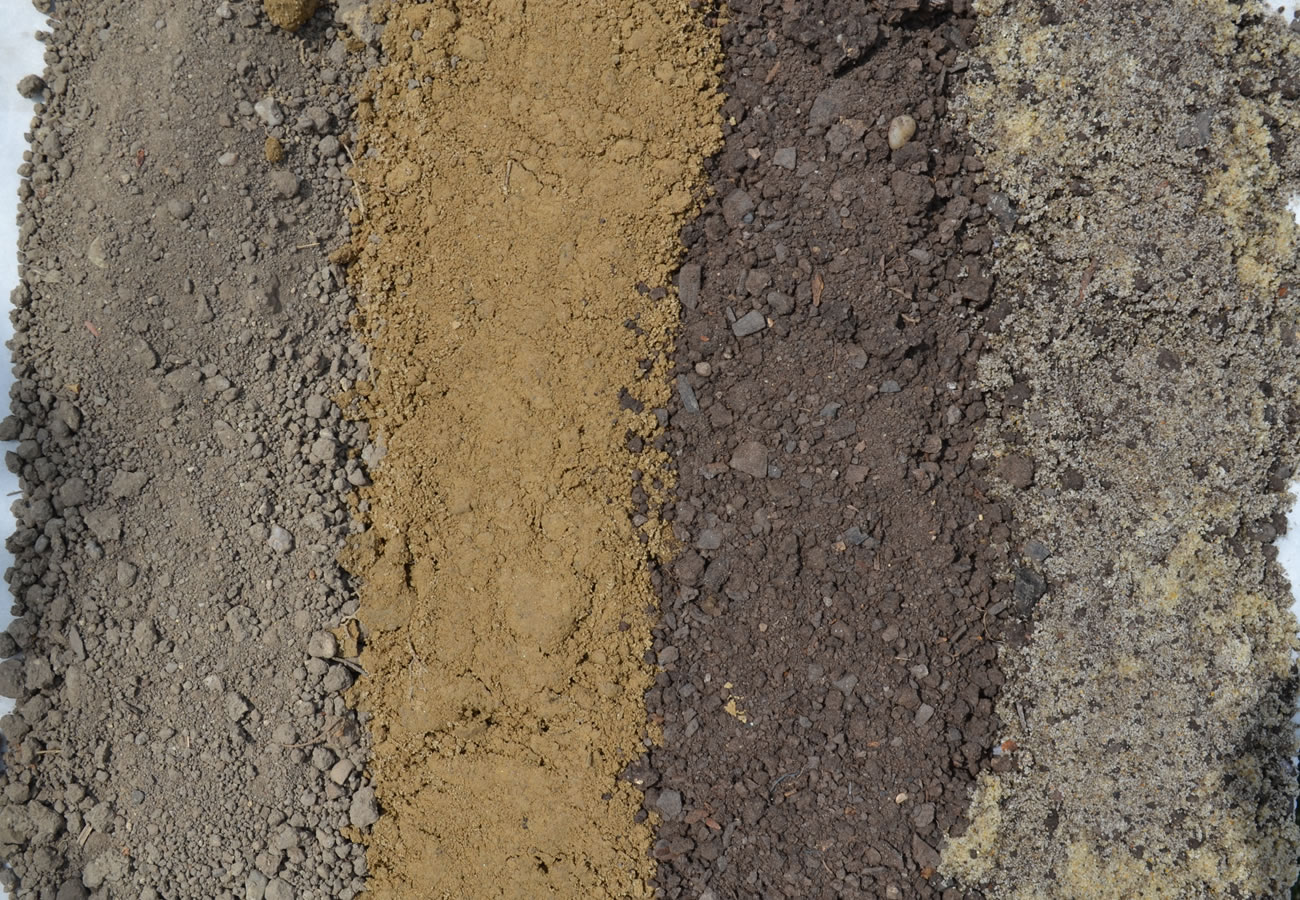
Types of Soil by Moisture Regime
When it comes to types of soil by water regime, they are classified into five types. This classification categorizes soils based on the moisture conditions throughout the entire year.
The types of soil by moisture regime classification are important for those working with soil, as it is vital when planting crops. Crops have specific moisture requirements, and if the selected crops correspond to and match the soil’s moisture regime, productivity increases.
The moisture regime classification provides insights into soil drainage characteristics. Soils with different moisture regimes have varying abilities to drain excess water. This information is important for managing soil moisture levels and preventing waterlogging or drought stress in crops.
- Aquic soil
- Udic soil
- Aridic soil
- Ustic soil
- Xeric soil
Types of Soil by Organic Matter
The organic matter content can vary within a specific soil type and across different regions, depending on soil management practices implemented on the farm. For instance, if sustainable farming techniques are used, such as incorporating organic supplements like manure or compost, it can increase the organic matter content of the soil.
The types of soil based on organic matter are an important consideration as they guide and assist farmers, gardeners, and land managers in making informed decisions.
- Peat soil
- Muck soil
- Organic-rich soil (Histosols)
- Mineral soils
Types of Soils by pH Ranges
Soil pH is a significant factor that is usually taken into consideration in farming and gardening. The pH greatly influences overall soil health and, consequently, the development and health of crops. Each crop and plant have specific pH preferences.
The pH of soil ranges from 0 to 14, with 0 representing the most acidic or highest concentration of hydrogen ions. Typically, most agricultural soils have a pH within the range of 4 to 9.
- Acidic soil
- Neutral soil
- Alkaline soil
Types of Soils Based on Drainage Characteristics
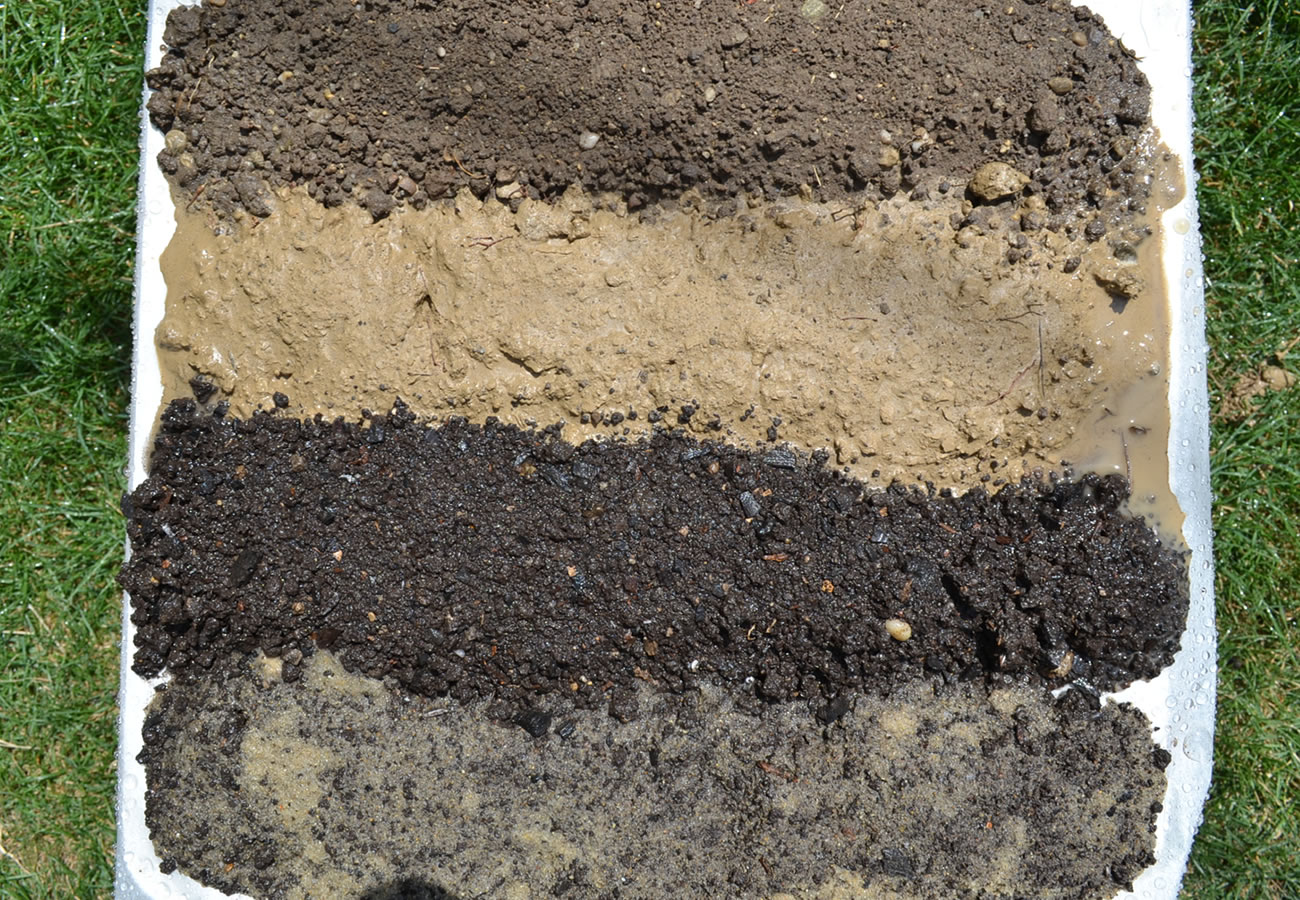
Soil can be classified based on drainage characteristics, which describe how well water moves through the soil and drains away. Here are the common classifications of soil based on drainage:
- Well-drained soil
- Moderately drained soil
- Poorly drained soil
- Excessively drained soil
Types of Soil by Parent Material
This classification of soil refers to the geological material from which it originates. Depending on the region, some soils form through weathering and decomposition, while in other areas, they result from the deposition of sediment carried by rivers and streams.
- Residual soil
- Alluvial soil
- Glacial soil
- Aeolian soil
- Volcanic soil
- Colluvial soil
- Marine soil
Types of Soil by Density
Apart from pH, water drainage, and organic matter, soil can also be classified based on density. Soil density refers to the mass of soil per unit volume and is typically expressed in grams per cubic centimeter (g/cm³) or kilograms per cubic meter (kg/m³).
Soil density influences soil fertility, water-holding capacity, and load-bearing capacity as well.
- Loose or low-density soil
- Compact or medium-density soil
- Dense or high-density soil
Type of Soil by Structure
Each soil has a specific structure, which is important as it directly affects its permeability. The structure of the soil determines its ability to allow water to pass through.
Here are different soil types based on their structure and their effects on permeability:
- Single Grain, rapid
- Blocky, moderate
- Platy, slow
- Granular, rapid
- Prismatic, moderate
- Massive, slow
Types of Soils based on USDA Soil Taxonomy
The USDA Soil Taxonomy is the most comprehensive soil classification system created by the United States Department of Agriculture.
This system organizes soils into types and various hierarchical levels, including orders, suborders, great groups, subgroups, families, and series. It is primarily used for scientific purposes and provides detailed and in-depth information about soils.
In the United States, over 19,000 soil series have been identified.
According to the USDA Soil Taxonomy, soils can be classified into eleven types.
| Type | Percent of land area occupied |
|---|---|
| Alfisols | 14 |
| Andisols | 1.7 |
| Aridisols | 8.3 |
| Entisols | 12.3 |
| Gelisols | 8.7 |
| Inceptisols | 9.7 |
| Mollisols | 21.5 |
| Oxisols | 0.02 |
| Spodosols | 3.5 |
| Ultisols | 9.2 |
| Vertisols | 2.0 |
How to Identify Your Type of Soil
Understanding the characteristics of your soil and finding the most suitable techniques for gardening, farming, or landscaping necessitates the identification of your soil type.
There are various DIY methods of soil identification, as well as professional ones.
Here are several methods you can use to identify your soil type:
TIP: Take samples from different locations: Soil composition can vary within a single garden or field. To get a more accurate representation of your soil type, collect soil samples from multiple areas, especially where you plan to plant or cultivate.
1. Observation Method
You can identify your soil type simply through observation.
Firstly, you can analyze its color. Soil color can be darker, which usually indicates a higher level of organic matter, or lighter, which means it has less organic matter.
After examining the color, you can check its texture. You can do this by taking a handful of soil and feeling it or by wetting it.
- Sandy soil feels gritty and does not hold its shape.
- Silty soil feels smooth and powdery but can retain its shape when moist.
- Clay soil feels sticky and can be molded easily.
This method of soil identification is the easiest and most cost-effective one.
It can help you identify the soil type, but it won’t provide information on other soil properties such as pH.
2. DIY Ribbon Test
Another inexpensive test you can do yourself to identify your soil type is the DIY Ribbon test.
Like the observation method, this test also does not help you identify the organic matter level or pH range of your soil.
Here are the steps you must follow for the DIY Ribbon test:
- Collect a soil sample from the exact location where you plan to plant your crops or plants.
- Remove any debris such as rocks, roots, or large clumps from the soil sample.
- Add a small amount of water to it.
- Work the soil between your fingers and palms to break it down into smaller particles.
- You can add more water to the soil as you work it, ensuring it remains moist but not overly saturated.
- Roll it into a cylindrical shape similar to a ribbon.
- Analyze the ribbon’s behavior, keeping in mind the following:
– Sandy soil: The ribbon will easily fall apart or break.
– Silty soil: The ribbon will hold its shape but eventually break under slight pressure.
– Clay soil: The ribbon will maintain its shape without breaking under gentle pressure. - Once the soil ribbon is formed, measure its length.
| Ribbon Length | Soil Type |
|---|---|
| No ribbon | Sandy soil |
| Less than 1 inch | Loam, sandy loam, or silty soil |
| 1 – 2 inches | Clay loam, sandy clay loam, or silty clay loam soil |
| Greater than 2 inches | Clay, sandy clay, or silty clay soil |
3. Jar Test or DYI Settle Test
A third possibility for DIY soil identification is the so-called settle test or jar test. Similar to the previous methods, this test is also easy and inexpensive.
Here are the steps to perform a jar test for soil type identification:
- Take soil samples from different areas of your garden or field, ensuring to include both surface soil and subsoil. Each sample should be about 1 cup in volume.
- Remove any visible debris, such as stones, roots, or plant materials, from the soil samples.
- Break up any clumps and crumble the soil into smaller particles.
- Fill a clear glass jar approximately one-third full with one of the soil samples.
- Fill the jar with water, leaving some space at the top to allow for shaking.
- Close the jar tightly with a lid and shake it vigorously for several minutes.
- Let the jar sit undisturbed for a few hours or overnight, allowing the soil particles to settle into distinct layers.
- Observe the settled layers in the jar from bottom to top.
| Container Analysis | Soil type |
|---|---|
| The water is mostly transparent, while the soil has settled entirely at the container’s base. | Sandy soil |
| The water is clouded, and a sediment layer of soil can be seen accumulating at the container’s base. | Clay soil, silty soil, or a combination of the two |
| The water appears mostly transparent, revealing distinct layers of particles of varying sizes at the container’s bottom. | Loam, clay loam, sandy loam, or another loam variation |
| The water appears cloudy, with numerous particles floating on the surface and some soil settling at the container’s bottom. | Peat soil |
| The color of the water is a light gray, and it contains gritty white pieces within. | Chalky soil |
4. Percolation Test
The percolation test is also a DIY method to find out about your soil that can be done at home. This test informs you about the drainage characteristics of the soil.
To perform the percolation test, you must have to:
- Dig a hole approximately 12 inches (30 cm) deep and wide.
- Fill the hole with water and let it drain completely.
- Refill the hole with water and measure the water level.
- Keep track of how long it takes for the water to drain.
- After 24 hours, measure the remaining water level.
TIP: If it takes over four hours for the water to drain, it indicates poor drainage.
| Water drainage | Soil type |
|---|---|
| Quick water drainage | Sandy soil |
| Slow water drainage | Clay soil |
| Moderate water drainage | Loam, clay loam, sandy loam, or another loam variation |
5. Worm Test
The worm test helps you identify the organic matter content and the quality of your soil. Fungi, bacteria, insects, worms, and other invertebrates are signs of good soil. The worm test can be done in less than 10 minutes.
All you have to do is:
- Make sure the soil has reached a minimum temperature of 55 degrees Fahrenheit and is moderately moist, avoiding excessive saturation.
- Dig a hole with dimensions of one foot in width and depth, depositing the excavated soil onto a tarp or cardboard.
- While refilling the hole with the soil, sift through it manually, counting the earthworms along the way.
| Worms numbers | Soil organic matter |
|---|---|
| Less than 10 worms | Poor soil quality. Not enough organic matter. |
| More than 10 worms | Good soil quality. Good organic matter. |
Professional Soil Testing
Professional soil testing is valuable for various purposes, including agriculture, horticulture, landscaping, gardening, and land management. It helps professionals make the right decisions about soil, fertility management, and crop selection.
This method involves taking various soil samples and sending them to a specialized laboratory.
The result of this test offers you the following information:
- nutrient levels (such as nitrogen, phosphorus, potassium)
- soil pH
- organic matter content
- soil texture
- soil composition
- specific recommendations for soil amendments and other necessary actions to increase soil productivity
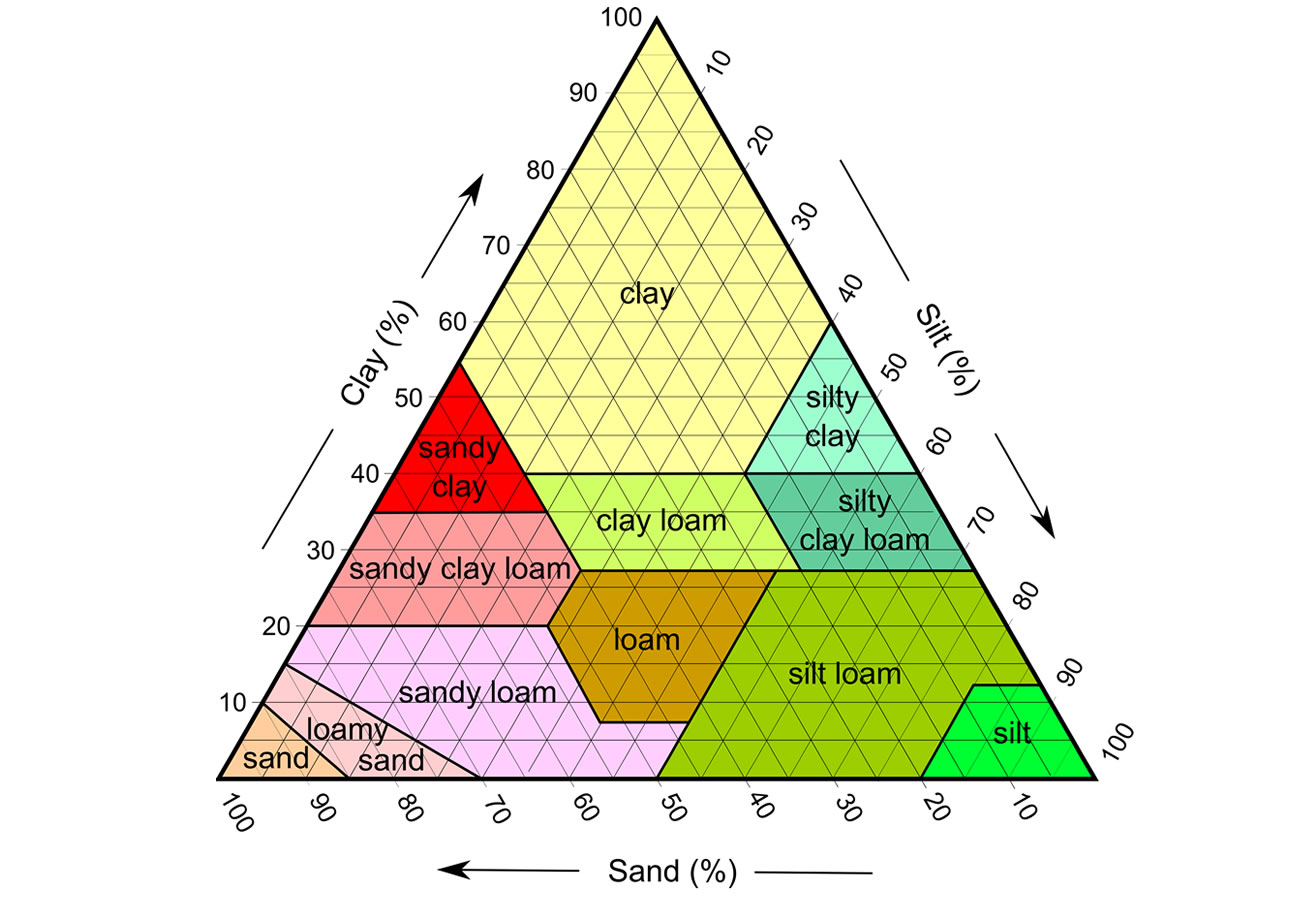
In conclusion, the benefits of understanding your type of soil are multiple, ranging from creating an environment that provides everything the plants need for successful crops to cultivating beautiful and healthy plants.
Now that you know which types are there and how to test your soil, take a deeper look at our website to explore the characteristics of each soil type and discover what you can plant based on its specific properties.
